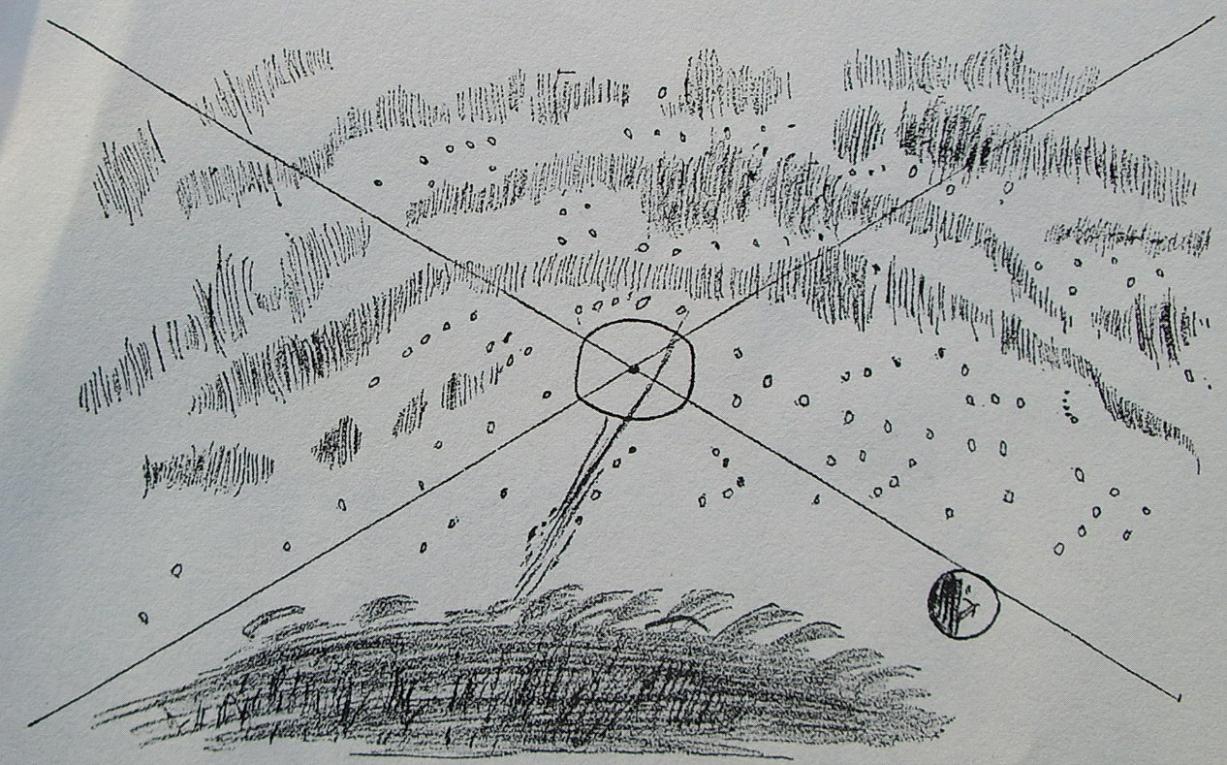The Coming of the Sky Dancers
Oct
26, 2009
The message is increasingly
clear: auroras can be extremely
violent events.
Today’s auroras are a relatively
peaceful phenomenon – whether they
take the form of gently dancing
curtains of light, a quiescent,
reddish ‘cloud’, or spectacular rays
of light, they are more likely to
enthrall than terrorise the people
watching from polar latitudes.
Appearances can be misleading, as
scientists are finding out in recent
years.
Modern research on the potential
effects of intense solar Coronal
Mass Ejections (CMEs) on the earth
and an ever-growing awareness of the
possibility of extreme geomagnetic
storms seem to rekindle interest in
the so-called ‘Carrington Event’ of
1859, when “skies all over planet
Earth erupted in red, green, and
purple auroras”, causing severe
damage to the telegraph networks of
the time. Between then and 1958,
altogether 6 well-documented auroras
were strong enough to be visible
within 30º or indeed 20º of the
equator.
Crucially, various peoples have
preserved memories of the potential
intensity of the polar lights.
Motifs that specialists in folklore
and religions routinely dismiss as
quaint curiosities of a
superstitious past can equally be
read as cultural adaptations of
genuine and reliable recollections
of natural events. Such motifs
typically postulate an intimate
connection of the auroras with
divine beings or ‘ancestors’ and
times when the world passed through
a phase of destruction and renewed
creation.
For example, in North America, the
northern lights are commonly
conceived as a display of the gods
dancing across the firmament. The
Ottawa people, of Michigan, Ontario,
and Oklahoma, regard the auroras as
a sign of the presence of the
creator, Nanahboozko, who retreated
to his “permanent home farther
north” in the wake of the creation.
For the Klamath, of southern Oregon,
the polar region was also the place
whence the creator had come
originally:
“Long, long ago Kemush created the
world. Morning Star called him from
the ashes of the Northern Lights and
told him to make the world.”
The original inhabitants of
southeast Australia, when
interviewed during the 19th century,
displayed a marked fear of the
southern lights. To the Wotjobaluk,
of central-western Victoria, as well
as the Ngarigo, closer to Canberra,
the aurora “signified … that, at
some great distance, a number of
blacks were being slaughtered, and
that the Aurora colour is the blood
rising up to the sky.”
Upon its appearance, the Kurnai, of
the Gippsland region, would be
“shouting such words as ‘Send it
away; do not let it burn us up.’”
Far from being overly imaginative
fantasies arising from the red hue
of the Aurora Australis, such
visceral reactions rooted in
traumatic memories of a time when
the aurora “filled the whole space
between the earth and the sky”,
precipitating floods, collective
madness and the final departure of
the creator from the earth.
The latter, known as Mungan-ngaua or
‘our father,' “long ago … lived on
the earth”, but when the ancestors
of the Kurnai provoked him, “he sent
his fire, the Aurora Australis,
which filled the whole space between
the earth and the sky. Men went mad
with fear, and speared each other,
fathers killing their children,
husbands their wives, and brethren
each other. Then the sea rushed over
the land and nearly all mankind was
drowned. … Mungun left the earth,
and ascended to the sky where he
still remains.”
Like the Ottawa, the Kurnai regard
the contemporary, tranquil auroras
as signs of the god’s ongoing watch,
explaining it as “Mungan’s fire”.
Francis Eagle Heart Cree
(1920/1921-2007), elder and song
keeper of the Ojibwe, North Dakota,
often used to tell about the
northern lights – that his people
referred to them as the ‘ancestors’;
that our day corresponds to their
night and vice versa; and that many
ancestors had been literally drawn
up into the sky in order to live on
in the lights.
In June 2003, during the
preparations for the so-called
‘Thirsty Dance’ performed in the
Turtle Mountains, Francis revealed
that there had been a time when the
northern lights were all over, much
larger and all-encompassing, and
would come closer to the ground,
touching it frequently. According to
him, today’s thunders, lightning and
northern lights are what remain from
a time “when the Thunderbirds
hovered overhead and carried away
the ancestors if you threatened or
got too close to them. … the
earliest songs came from them, not
the animals. The pulsing,
reverberant, humming, chanting
Ooowwwmmm, hiii, heyyy, . . . is the
sound the Thunderbird auroras made.”
During this era, the whole
atmosphere was active and animate,
and the few plasma phenomena we see
today are mere remnants of the “Sky
Dancers” of olden times. Coming from
a man who was never exposed to
formal western education and stood
in an age-old, unbroken lineage of
cultural continuity, this testimony
forms a striking parallel to the
Australian belief that the polar
lights used to be much more powerful
in the past.
At a time when scientists begin to
ponder in earnest the possibility of
extremely violent solar storms
triggering geomagnetic disturbances
on a scale that is hard to imagine,
human traditions such as the ones
cited above deserve to be heard.
Elsewhere we have argued that many
familiar motifs of global creation
mythology are explicable as aspects
of a high-energy density auroral
storm that took place in the early
Holocene. To this indirect evidence
one could add these direct reports
of increased auroral activity during
the age traditional societies would
call that of ‘creation’ and of ‘the
gods’.
In memoriam: Francis Eagle Heart
Cree.
With thanks to Nicholas Vrooman.
Contributed by Rens Van der Sluijs
www.mythopedia.info
Further Reading:The Mythology of the
World Axis; Exploring the Role of
Plasma in World Mythology
www.lulu.com/content/1085275
The World Axis as an Atmospheric
Phenomenon
www.lulu.com/content/1305081
|







